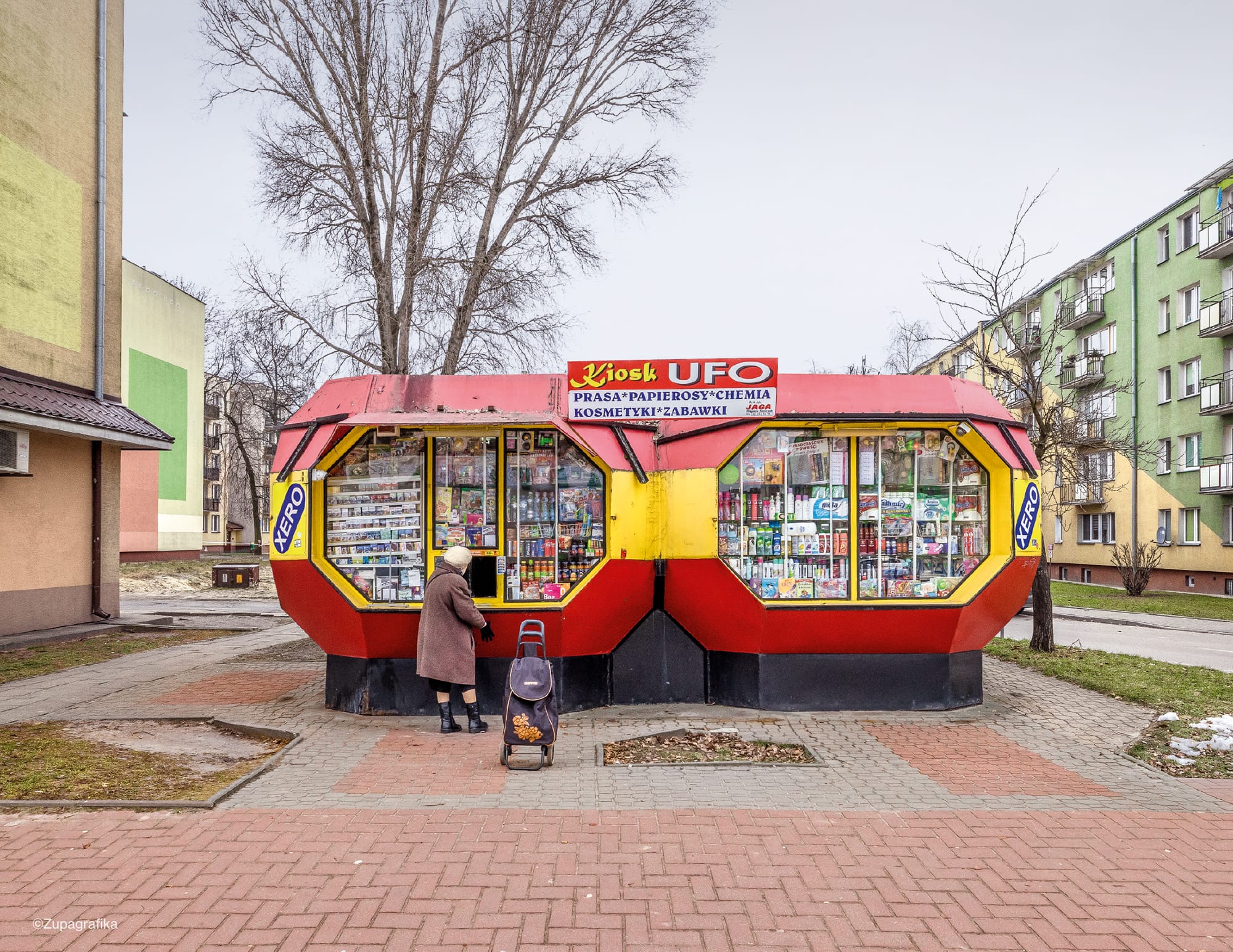
[ad_1]
Books
Design
History
Photography
#architecture
#cities
June 21, 2024
Kate Mothes

UFO, a two-module ‘Bathyscaphe’ in Biała Podlaska, Poland. All images © David Navarro and Martyna Sobecka, courtesy of Zupagrafika, shared with permission
If you were born in the past three or four decades, you may not remember much about the former Eastern Bloc, a group of countries aligned politically and economically with the Soviet Union, or USSR, from 1945 to 1991. The coalition was characterized by its alignment with the communist ideology of Marxism–Leninism, rather than the capitalist structure of the Western Bloc, or countries that aligned with the United States.
In the late 1980s, the USSR loosened its yoke on the Eastern Bloc, spurring revolutionary democratic action, and in 1989, the momentous and symbolic destruction of the Berlin Wall. By 1991, Communist rule was overthrown in Europe.
During the second half of the 20th century, socialist nations adopted their own architectural vernacular. Primary examples include the Stalinist style between the 1930s and 1950s, followed by remarkable examples of Brutalism popular until the 1980s. And amid this transformation from towering classicism to stalwart modernism, a contrastingly compact architectural unit began to appear amid housing estates, on street corners, and in city squares.

A popular bakery in Belgrade, Serbia, in a double-module K67
Throughout former Yugoslavia and the Eastern Bloc, futuristic and brightly colored kiosks began to emerge as hot dog stands, flower shops, currency exchanges, ticket booths, and more. The seminal K67 model, devised by Slovenian designer Saša J. Mächtig, spurred numerous other designs around the region. The modules are constructed of reinforced fiberglass and were conceived as single units that could be linked together to create larger clusters.
Over time, as the kiosks have aged and weathered, they have been gradually abandoned or removed. A new book, Kiosk: The Last Modernist Booths Across Central and Eastern Europe, celebrates these tiny urban icons, featuring more than 150 examples photographed by David Navarro and Martyna Sobecka. “While some remain active or have undergone refurbishment, others have been abandoned or have slowly faded from the urban landscape,” the pair says.
Navarro and Sobecka, who also founded the independent publisher and design studio Zupagrafika, focus on “books and kits exploring the post-war modernist and brutalist architecture of the former Eastern Bloc and beyond.” Kiosk documents a disappearing regional phenomenon in vibrant color—and all seasons.
Purchase a copy in Zupagrafika’s shop.

Left: Kami newsstand in Poland. Right: KC190 kiosk in Croatia

A row of second-generation K67 booths in Wałbrzych, Poland

Left: Element A of a K67 booth in Poland. Right: Element B of a K67 booth in Slovenia

An abandoned K67 element A in Pula, Croatia

KC190 kiosk, originally manufactured in Macedonia, situated in Kragujevac, Serbia

Ewa sells fresh farm eggs in a K67 booth in Świdnica, Poland

“Kami” kiosk manufactured in Poland, situated on the Manhattan Estate in Łódz, Poland

#architecture
#cities
Do stories and artists like this matter to you? Become a Colossal Member today and support independent arts publishing for as little as $5 per month. You’ll connect with a community of like-minded readers who are passionate about contemporary art, read articles and newsletters ad-free, sustain our interview series, get discounts and early access to our limited-edition print releases, and much more. Join now!
[ad_2]